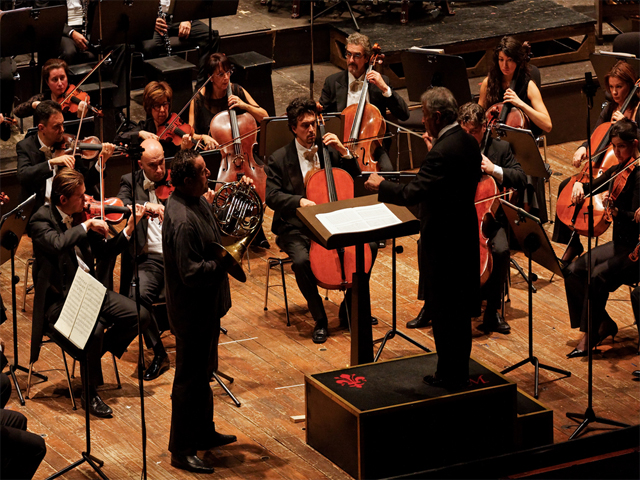
Florence, the birthplace of the European Renaissance, thrived between the 14th and 17th centuries as a center of trade, finance, architecture, and the arts. At the height of its power and influence, it became one of the wealthiest cities of all time, and its rulers built some of the grandest churches, palaces, and museums in Europe. Today, these Florentine wonders are still being enjoyed by millions of people who come to Florence to pay homage to the culture and heritage of a city that has left an enduring legacy for the world.
But aside from renowned paintings, sculptures, and monuments, Florence today also serves host to a festival which aims to preserve and nurture opera music, an inheritance from the Renaissance era and one of Florence’s greatest contribution to the arts. First staged in 1933 through the patronage of conductor Vittorio Gui, the Maggio Musicale Fiorentino festival is known for its visually dramatic productions featuring contemporary and classical operas.
The festival gives close and thoughtful attention to the visual facet of the opera, making it a platform not only for musicians to showcase their talents on, but also a venue for respected names in Italian theatre, film, dance, production design, and costume design to collaborate.
The venues
As in previous editions of the event, most of the performances for this year’s Maggio Musicale Fiorentino will be held at the Teatro Comunale di Firenze, the premier opera house of Florence. First inaugurated in 1862, the theatre has been closely associated with the music festival since the 1930s, which is why it is now also known by its alternative name, the Teatro del Maggio Musicale Fiorentino.
Performances for this year’s festival are also likely to be held in other locations, including the Teatro Goldoni, the Teatro della Pergola, Piccolo Teatro, and the new and ultra-modern Nuovo Teatro dell’Opera di Firenze.
Diverse performances
Because the festival is known for its artistic exploration of music from different eras, the event was sometimes held with underpinning themes. There have been festivals dedicated to the music of composer Gioachino Rossini (1952), to Expressionism (1964), to 20th century opera (1994), and to Romanticism (1995).
Most other times, however, the Maggio Musicale Fiorentino features works that encompass different ages. The 2013 edition of the event, for instance, featured operas from the Baroque era up to 20th century. The festival commemorated the bicentennial of the birth of Italian composer Giuseppe Verdi through performances of his works like Macbeth and Don Carlos, and it also honored the centenary of the birth of English composer Benjamin Britten. There were also performances of works by Luciano Berio and Bruno Maderna, who are prominent figures of 20th century Italian music.
Grand masters like Claudio Abbado, Zubin Mehta, and Daniel Gatti directed a number of orchestra and choir performances, and there were also evening ballet performances by the Maggio Danza dance company, which presented some of the most important and popular works of contemporary choreographers.
In this year’s Maggio Musicale Fiorentino, you can expect a similarly diverse constellation of shows, as well as performances from some of the most illustrious names in opera and allied arts. Make sure to check the festival website www.maggiofiorentino.com for daily updates about the schedule of these performances.
Tips for visitors
How to buy tickets – You can pay tickets online through the Maggio Musicale Fiorentino website. Once you’ve paid for the ticket, you can either print it yourself, or you can collect a printout at the theatre ticketing office’s prepaid ticket counter one hour before the show. If you are buying tickets by telephone, call the ticketing office at +39 055-2779-350 from 10:00 am to 1:00 pm and from 2:00 pm to 5:00 pm, Tuesday to Friday, and pay by credit card. Likewise, you can collect your ticket at the ticketing office one hour before the start of the performance.
Get discounts – On top of the occasional ticket discount promotions announced through the official website, ticket price reductions are usually given to senior citizens (65 years and above), disabled people, and members of cultural and voluntary associations. In previous seasons, the Maggio Musicale Fiorentino also offered the Maggio Card for younger people up to the age of 30. The card entitled holders to ticket discounts, free guided tours, and special meet-and-greet events with artists. Consult with your ticket sales agent to know about available discounts and promotions for the 2014 season.
Opera checklist – Most of the shows will be performed in the language in which they were originally written. Although there will be subtitles, it will most likely be in Italian, so check if you can get an English booklet with your tickets.
Remember that premiere night opera performances require formal evening wear, so men should come in full dark suit and women should wear a proper dress. For other performances, avoid coming in clothing that can be deemed too casual.
Some shows can run for more than three hours, so do consider how you are going to get home afterwards because public transportation like trains might not be available late in the evening. Arranging a taxi pickup service in advance is one option.
It’s not just for 2 months – The main festival takes place from May to June, but wonderful performances are staged all year long! Keep abreast of the newest shows being staged so you don’t miss out on the ones you would really like to see.










